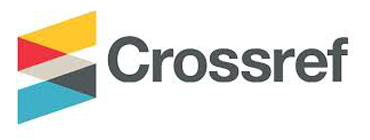APPLICATION OF INFORMATION SERVICES TO IMPROVE GOOD CHARACTER IN CLASS X STUDENTS AT SMA NEGERI 10 MEDAN
Abstract
In general, the age of students is the age of character formation. The better the child's character, the more advanced his educational thinking and behavior will be. Character is what must be prioritized in schools, because character aims to shape humans into an advanced and modern era, character also encourages a developing mindset. Information services are services that attempt to cover individual deficiencies in required information. The aim of this research is to improve good character in class The research technique used was a simple random sampling technique, in two cycles, where the first cycle was planning and ended with the second cycle with the evaluation stage. Meanwhile, to obtain information data from the results of this research, the researcher used a questionnaire distribution which will be a comparison of before the service was implemented and after the service was implemented, which is in the form of a simple percentage. . The results of distributing and collecting questionnaire data in the first cycle were with an average value of 63.81 (low), then distributing and collecting questionnaire data again in the second cycle with an average value of 96.06 (high), it can be understood that the implementation of the service Information to Improve Good Character in Students at SMA Negeri 10 Medan for the 2022/2023 Academic Year increases.
Full Text:
PDFReferences
Ali, M. (2013:9). The role of information services in increasing high school students' understanding of self-character. Journal of Education, 17(2), 9-16.
Aqib, Z., & Sujak, A. (2011). Development of Character Education Based on Emotional and Spiritual Intelligence. Prenada Media Group,3(2)7-8.
Asmani. (2011). Educational Psychology. Rineka Cipta, 7(3), 50-56
Endriani, E. (2020). The Effect of Using Accounting Information Systems on Company Financial Performance. Journal of Accounting and Finance, 25(1), 20-28.
Fitri, E., Neviyarni, N., & Ifdil, I. (2016). The Effect of Problem-Based Learning on Students' Problem Solving Ability and Creativity in Vibration and Wave Material. Journal of Physics and Technology Education, 2(2), 63-71.
Hendriana, E. C., & Jacobus, A. (2016). Implementation of Character Education in Schools Through Example and Practice. Journal of Character Education, 6(1), 1-10.
Ifdil, I. (2008). Educational psychology, Jakarta E-Book, 1(1), 20-30.
Ilyas. (2016). Character Education in the Family. Journal of Character Education, 6(1), 33-42.
Julaiha. (2014). Improving Character Education Through the Implementation of a Culturally Based Scientific Learning Model. Journal of Character Education, 4(2), 140-151.
Kusri, A. M. (2016). Analysis of the Effect of Learning on Understanding Physics Concepts in Class XII Science Students at SMA Negeri 1 Sinjai. Journal of Physics and Technology Education, 2(1), 1-10.
Lahmuddin. (2006). The Influence of the NHT (Numbered Head Together) Type Cooperative Learning Model on Student Learning Achievement. Journal of Education, 7(2), 35-45.
Megawangi, R. (2011). 9 Pillars to a Prosperous Indonesia. Indonesian Torch Library Foundation, 4(6)30-37
Muchtar, M., & Suryani, A. (2019). Analysis of the influence of motivation Management Journal, 5(2), 98-107
Marvin W. Berkowitz, (2008:19). The Eleven Indicators of Effective Character Education.E-Book
Nurihsan. (2009). Factors that Influence Student Learning Motivation. Journal of Education, 10(2), 30-40.
Prayitno and Amti. (2004). Implementation of Business Development Strategies in Small and Medium Industries. Journal of Business and Economics, 7(2), 269-271.
Prayitno. (2002). Principles of Information Systems Development. Journal of Information Technology, 4(1), 12-22.
Prayitno. (2004). Business Development Strategy in Small and Medium Industries. Journal of Business Management, 5(1), 250-261.
Prayitno. (2006). Information Services. Jakarta: Main Library, 7(3), 1-4
Prayitno. (2011). Character Education: Strategy for Building the Character of the Nation's Children. Jakarta: Rineka Cipta, 5(2)20-24
Said. (2011). Development of Children's Character Education in Elementary Schools. Journal of Education, 2(1), 1-12.
State Secretariat of the Republic of Indonesia. (2003). Law of the Republic of Indonesia Number 20 of 2003 concerning the National Education System. Jakarta: State Secretariat of the Republic of Indonesia.
Siregar, H. (2014). Qualitative research methodology: Theory and practice. Salemba Humanika, 3(7)61-65
Sugiyono. (2018). Quantitative, Qualitative, and R&D Research Methods. Bandung: Alphabeta, 2(2) 10-12
Sugiyono. (2018). Quantitative, Qualitative, and R&D Research Methods. Bandung: Alfabeta.3(2),57-131
Tohirin. (2007). Information and Library Services. Jakarta: Indonesia,3(2)140-149
Tohirin. (2015). Character education and personality formation. Scientific Journal of Character Education, 5(2), 68-75.
Refbacks
- There are currently no refbacks.

This work is licensed under a Creative Commons Attribution-NonCommercial-ShareAlike 4.0 International License.
INDEXING
Bright Vision by UIN Sumatera Utara Medan is licensed under a Creative Commons Attribution-NonCommercial-ShareAlike 4.0 International License.
Based on a work at http://jurnaltarbiyah.uinsu.ac.id/index.php/brightvision.









